
Albania’s Only Travel Guide You Need For A Great Trip in 11 Easy Steps
- Destinations Europe
Cruisit Team
- April 18, 2022
- 0
- 4581
- 75 minutes read
Albania’s Background
Albania formed a multiparty democracy between 1990 and 1992, after 46 years of xenophobic Communist dictatorship. The transition has been tough as successive administrations have had to deal with high unemployment, pervasive corruption, a deteriorating infrastructure, powerful organized criminal networks with connections to government officials, and disruptive political opponents. Albania has made steady progress toward democracy since first hosting multiparty elections in 1991, but flaws persist, notably in the rule of law.
Few visitors know anything about Albania other than foggy recollections of its Communist history. Its rolling mountains and exquisite beaches, territories studded with antique Roman remains and charming Ottoman villages, are largely unknown. Most people seldom see the seductive azure lakes or the scenic valleys inhabited by enormously welcoming residents, preferring to visit the country’s considerably more popular neighbors. This rocky nation still doesn’t appear to fit into the vast continental jigsaw, with uniquely alien tones emerging from its language, customs, and food, despite decades of isolationist rule. But it’s those quirks that make it such a fascinating and gratifying part of Europe that begs to be discovered.
Crossing entering Albania by land or water, you’ll observe clusters of grey, dome-like structures dotting the landscape. Under Hoxha’s tenure, these bunkers were strewn around the nation in vast numbers – estimates go as high as 750,000, implying that there was more than one for every four Albanians. These were not, as one might imagine, family shelters, but strategic sites to which every able-bodied man was expected to march, weapon in hand, upon the outbreak of war. Though Western spies attempted to penetrate the nation, the bunkers were never put to the test. They’re almost tough to get rid of, and have become a semi-permanent aspect of Albanian life; young, privacy-seeking couples occasionally employ them in intriguing ways, like “Bunker Fest” which was held to celebrate them.
“Albania, a piece of Asia in Europe, is as colorful
and dynamic as anything further east“
After 50 years of rigorous Stalinist control, a la North Korea, it’s no surprise that Albanians let it all out after they managed to cast off the communist party’s burden in the 1990s. They have now sailed into calmer seas after some initial start-up troubles, such as collapsed pyramid schemes causing widespread panic, the looting of a massive stockpile of armaments, and the more or less dissolution of the government.
Albania is appealing to tourists for a variety of reasons. For one thing, pure inquisitiveness. It had been entirely cut off from the outside world for so long that it was a blank area on many people’s maps. But this may have been the case in those heady early years of democratic transition. There have now been enough visitors to give the casual visitor an idea of the country.
Albania has a wild beauty, complete with colorful marketplaces and old ruins. It’s a little bit Italian, a little bit Balkan, and a little bit Asian. It is both Muslim and Orthodox. With winding mountain roads, snowclad mountain peaks and crystalline rivers, Ottoman villages and goat herders, communist apartment blocks painted in bright colors to liven things up, unspoiled Adriatic beaches, and crumbling bunkers as far as the eye can see, courtesy of the paranoid dictatorship they left behind.
It’s a nation you don’t want to miss, even if it’s only to sample some Asian flavors in the often-rigid European continent.
- Tirana (called Tiran) is on the rise, with colorful paint jobs brightening the drab soviet concrete buildings, a stunning mosque, excellent museums, a people that seems to believe the future belongs to them, and a thriving nightlife.
- Get away from the city’s hustle and bustle and inhale some healthy mountain air in picturesque Berat, a World Heritage Village.
- Visit the historically significant Kruj (or Kruja), which has a fortress.
- Relax on one of the many beaches in Albania’s ‘Riviera.’
- Hike the Dinaric Alps near the Montenegrin border.
- Wander among the ancient remains of Butrint (also known as Buthrotum) before relaxing on the beach outside of Sarand.
- In Shkodr, immerse yourself in culture.
- Trek through Lura National Park (also known as Lur National Park, Parku Kombetar I Lurs) and its glacier lakes.
- Swim to one of Ksamil’s three islands (aka Ksamili)
- Don’t bother about obtaining a visa; you probably won’t need one. But still do check before you go.
- English is growing more popular, especially among the younger population and in cities. The elder generation may be able to communicate in Italian.
Despite its poor reputation, Albania’s crime rate is really relatively low by European standards, and you’re quite unlikely to come across one of the country’s renowned blood feuds, some of which still rage up north. It is worth noting, however, that there is a high prevalence of traffic accidents, as evidenced by the distressing number of memorial stones by the wayside.
Note that Albania’s hospitals are in disrepair; most Albanians seek care abroad if they can afford it, and you should do the same if feasible. Because there are so few ambulances, it’s typically preferable to hail a cab if you or a buddy stumble across an accident. Pharmacies may be found in all urban locations and are typically open from 9 a.m. to 7 p.m. This mean you should grab adequate travel insurance.
Summer is the greatest season to visit Albania since the weather is usually pleasant and dry, while winter is usually moderate and damp. Temperatures vary greatly from place to region — the western half of the country, for example, is normally milder – but are rarely so severe. Unlike its neighbors on the Adriatic and Ionian seas, Albania does not receive a large flood of tourists at any time of year, making it one of the greatest summer locations in Europe – especially if you want to go on and in the water.
Albania may be reached by boat from Italy, by bus from anywhere, by automobile, or by plane, but not by rail (though there are internal lines).
By Ferry
The most fascinating mode of transportation is by ferry. Ventouris Ferries (from €40; www.ventouris.gr) operates nightly sailings from Bari in Italy to Durrs; there are hourly bus connections between Durrs and the capital. Saranda may also be reached by boat from Corfu (from €19; www.ionian-cruises.com), with at least two ferries every day completing the forty-minute journey.
By Bus
Greece has by far the simplest international bus connections – there are daily trips to Tirana from Athens and Thessaloniki (from €25), and direct buses to a number of other Albanian cities are also available. Direct services from Skopje to Tirana, via Struga and Elbasan, are available from Macedonia. There are no services from the capital Podgorica, although there is a twice-weekly bus from Budva to Tirana and several unauthorized minivans between Shkodra and Ulcinj.
By Air
With an increasing number of international connections, flying into Albania is becoming easier. Low-cost airlines link from all around Europe, and direct British Airways flights from London may be relatively affordable. You may alternatively travel to Corfu and then take a ferry to Saranda. Most countries do not require visas for citizens; South Africa is an exception.
By Car
The majority of travel is done by bus; the vehicles are typically nice, the rates are low, and the roads are being renovated. However, the government have resolutely refused to establish any official bus terminals, which is great in smaller towns but a problem in a metropolis the size of Tirana, where things are absolutely muddled. Buses are occasionally augmented by minibuses known as furgons, which are legally illegal, especially in large towns, but some continue to operate undaunted; they do not leave until they are full and will frequently meander around town until they have enough passengers.
Albania has no international railroad links, although it does have a tiny rail network. Tirana’s main railway station has been dismantled and relocated to the tiny hamlet of Kashar near the airport as part of continuing building work in the city’s north. A limited service runs from here to a few places around the country.
A SIM card that includes unlimited data, messaging, and up to an hour of international calls can be purchased for as little as €10 per month.
Wi-Fi is widely available, particularly in cafés, and you’ll be able to find a specialized internet café in most cities.
Buy a Skyroam Solis for limitless Wi-Fi on the move when traveling Albania. It works in 130+ countries for one set daily charge, paid for on a pay-as-you-go basis. You can connect up to five devices at the same time. Prices start as low as €5 per day.
Top Places in Albania

The Blue Eye
The “Blue Eye” is a natural spring and phenomena in the town of Muzin in Finiq municipality, southern Albania. The pure blue water of the river may be seen from a depth of more than fifty meters, making it a renowned tourist destination. This phenomena is also known as the ‘Bistric springs,’ since it is the beginning water source of the Bistric river, which is 25 kilometers long and terminates in the Ionian Sea south of Sarand. Divers have sunk to a depth of fifty meters, although the true depth of the karst hole remains unknown.
Skanderbeg Square
Skanderbeg Square is the major square in Tirana, Albania’s capital. Armando Brasini designed it in 1925, and Florestano Di Fausto. The square is named after Gjergj Kastrioti Sknderbeu, an Albanian national hero. The area is home to a number of structures, including the Tirana International Hotel, the Clock Tower, the City Hall, the National Opera, and the National Library. The Skanderberg Monument, on the other hand, dominates the square.
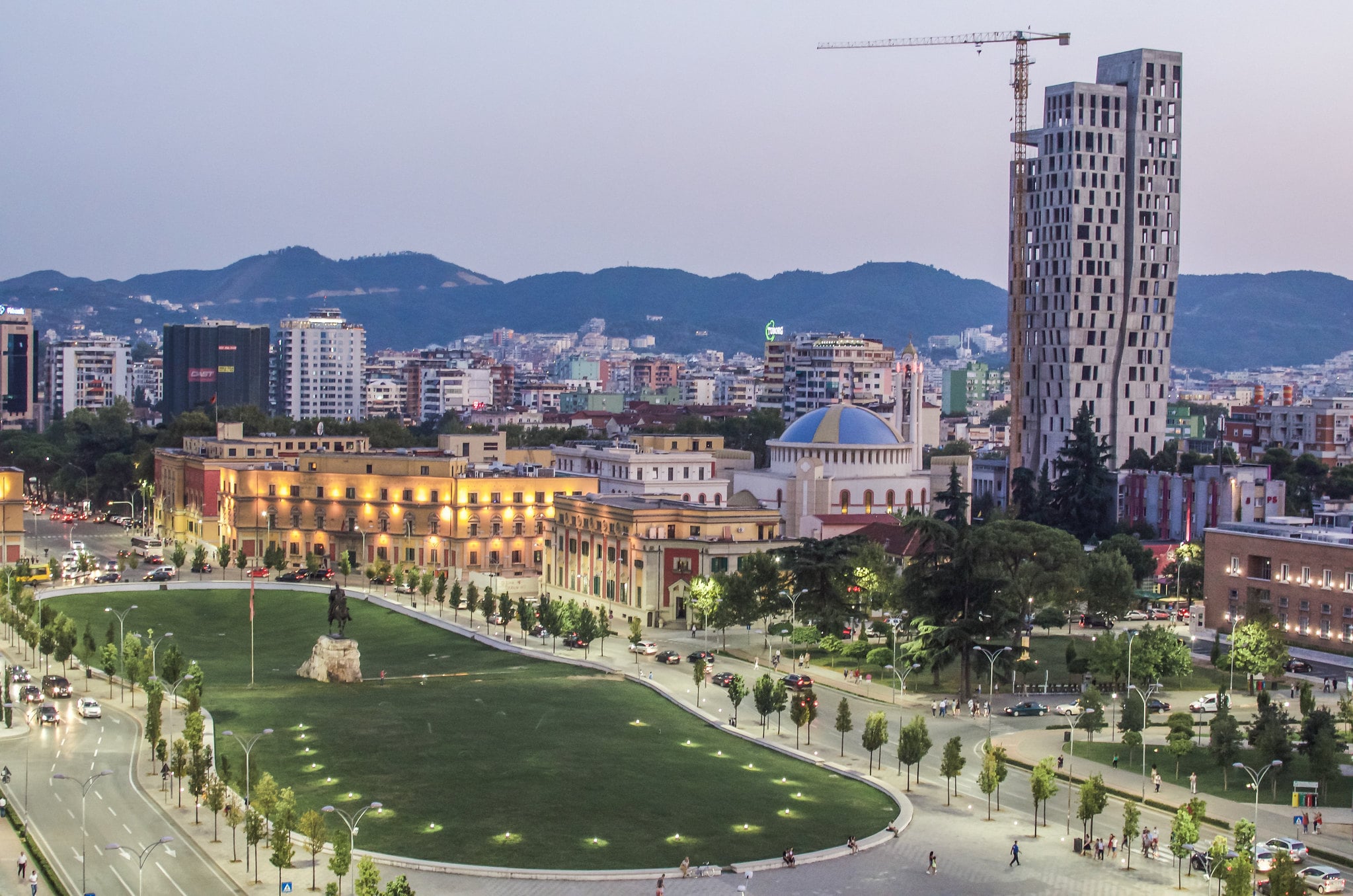

Tirana National History Museum
The National History Museum in Tirana, Albania, is a history museum. It debuted on October 28, 1981. Above the museum’s entrance is a massive fresco mosaic titled The Albanians, which represents claimed ancient to current Albanian personalities. The pavilions of the museum are as follows: Antiquity, Middle Ages, Renaissance, Independence, Iconography, National Liberation Antifascist War, Communist Terror, and Mother Teresa.
Pyramid of Tirana
The Pyramid of Tirana is a structure and former museum in Tirana, Albania’s capital. Following the fall of Communism in 1991, it became a meeting facility after opening as a museum in 1988. During the 1999 Kosovo War, the structure served as a NATO base. In 2018, an initiative was announced called TUMO Tirana, transforming the Pyramid into an IT center for the youth focused on computer programming, robotics, and start-ups.
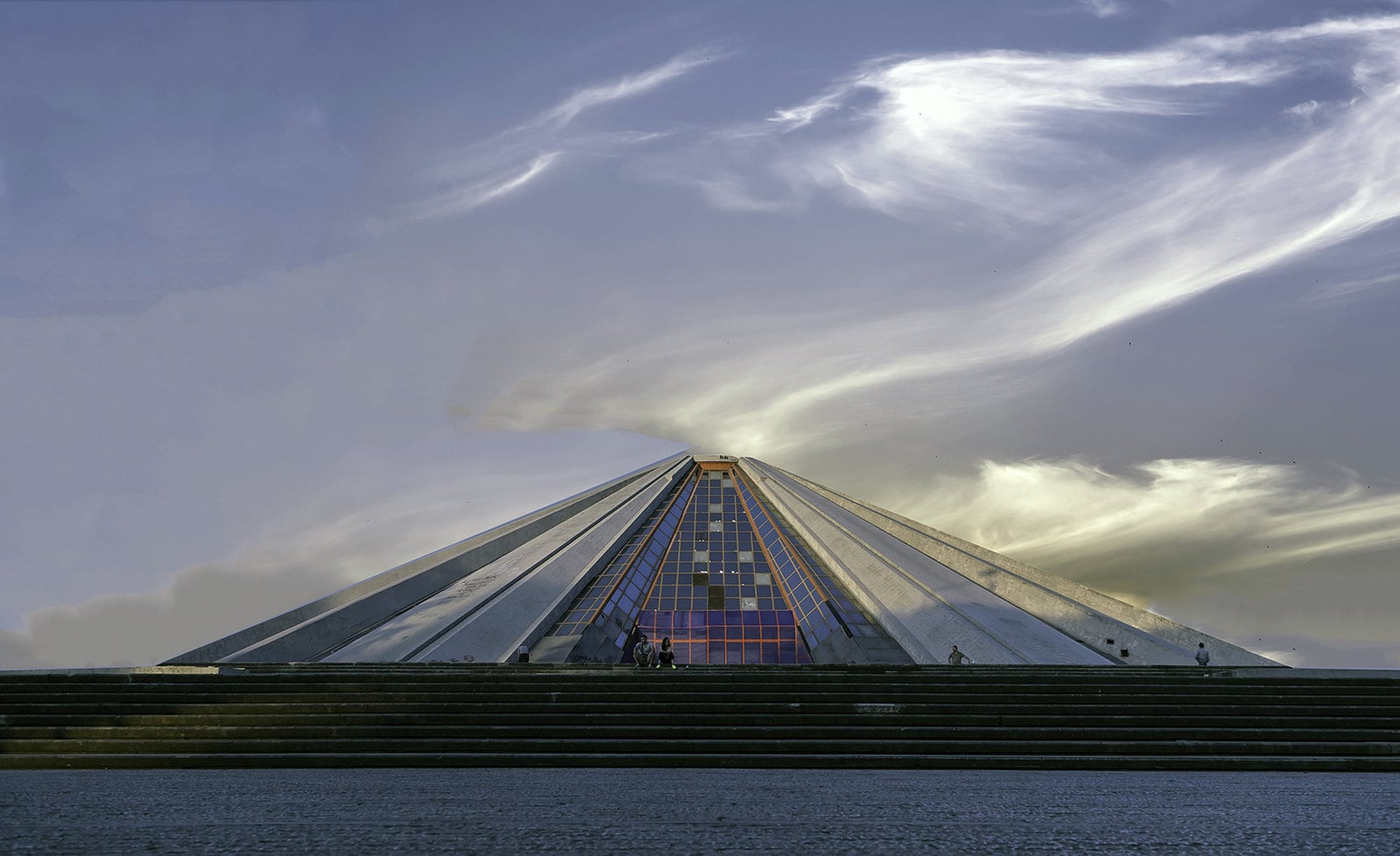

Llogara National Park
The Llogara National Park is a national park in Southwestern Albania that is located on the Ceraunian Mountains near the Albanian Riviera. It was founded in 1966 with the goal of protecting multiple habitats and species of national significance. Because it supports a large variety of different bird and plant species, the region has been designated as an important Bird and Plant Area. The park’s terrain is exceptionally diverse, spanning from the snow-covered high peaks of the Ceraunian Mountains in winter to the bright Albanian Ionian Sea Coast in summer.
7-day Itinerary in Albania (with extension options)
Days 1 (with possible 1 day extension)
Arrival at Saranda Port (By Ferry), travel to Gjirokastër – or arrive to Gjirokastër immaediately
If you were already in Greece, book a seat on the Ionian Seaways hydrofoil from Corfu Town to Saranda Port. There are early ferries at 9:00 a.m., so you’ll have to get up at silly o’clock on the first day of your trip. However, there are other ferries scheduled, such as at 1:30 PM. Whatever mode of transportation you use to come to Albania, the Blue Eye will be your first stop.
Located near Muzinë in Albania’s Vlorë County, the Blue Eye is an underwater spring, where the water bubbles up from rocks over 50 meters below the surface. Its name comes from the color of the water at the core of the spring. The greatest part was seeing so many bright blue damselflies sitting on the plants at the water’s edge.
The Blue Eye costs 200LEK (apparently the regular admittance fee in Albania). However, you might not find an ATM to withdraw money. So make sure you stock up some cash. If not, you could try to tell that to the ticket office to try to find you a solution (Like free entry)
Continue your journey to Gjirokastr, a city notable for its castle (one of the biggest in the Balkans) and its UNESCO-listed Old Town, which is set in a valley nestled between the Gjer mountains and the Drino River.


If you’re on a limited budget, you may stay at the strategically situated Friends Hostel, which will provide you with a warm welcome on your first day in Albania. Your host and their family will treat you like friends right away, and even the resident dog and cat will want to get to know you. Every morning, the terrace gives stunning views of the city and up to the castle and is a beautiful sunny area to enjoy breakfast. You’ll find other accommodation options below.

- Budget: Friends Hostel
- Mid-range:
- High end:
This section will be added shortly.
This section will be added shortly.
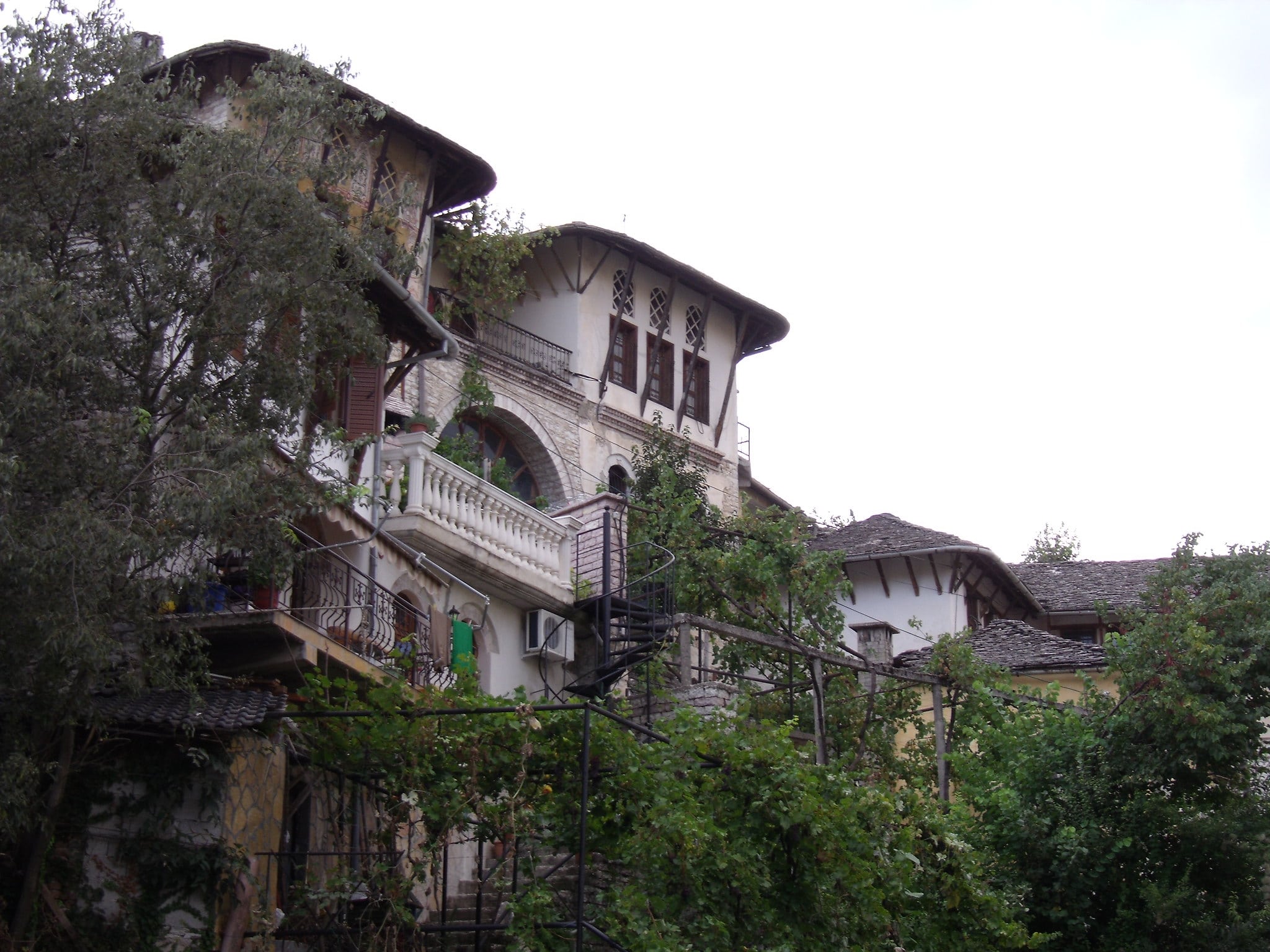

Days 2+ (Depending on whether you added the extra days in Gjirokastër)
Explore Gjirokastër, travel to Dhermi
As soon as you’ve finished your breakfast feast, make your way up to the city’s main attraction — its castle. Originally built in the 12th century and expanded several times since then under the rule of Albania’s many political leaders, it was most recently converted into a prison in the 1930s by King Zog (yes, that is his real name!) to house members of the various resistance forces active in the country during his reign.
It’s a quick 10-minute walk up to Gjirokastr’s castle, and the views of the city’s historic Ottoman-era residences along the route are spectacular.
The advised length of time for visiting the castle is one hour, according to the information sign at the entrance, however you may easily spend 2-3 hours here! If you like castles, that is. Perhaps the explorer in you will enjoy it, because castles provide so many possibilities for discovery – ruins to scramble over, tunnels to explore, rooms to study, windows and doors to peep through; the list goes on!

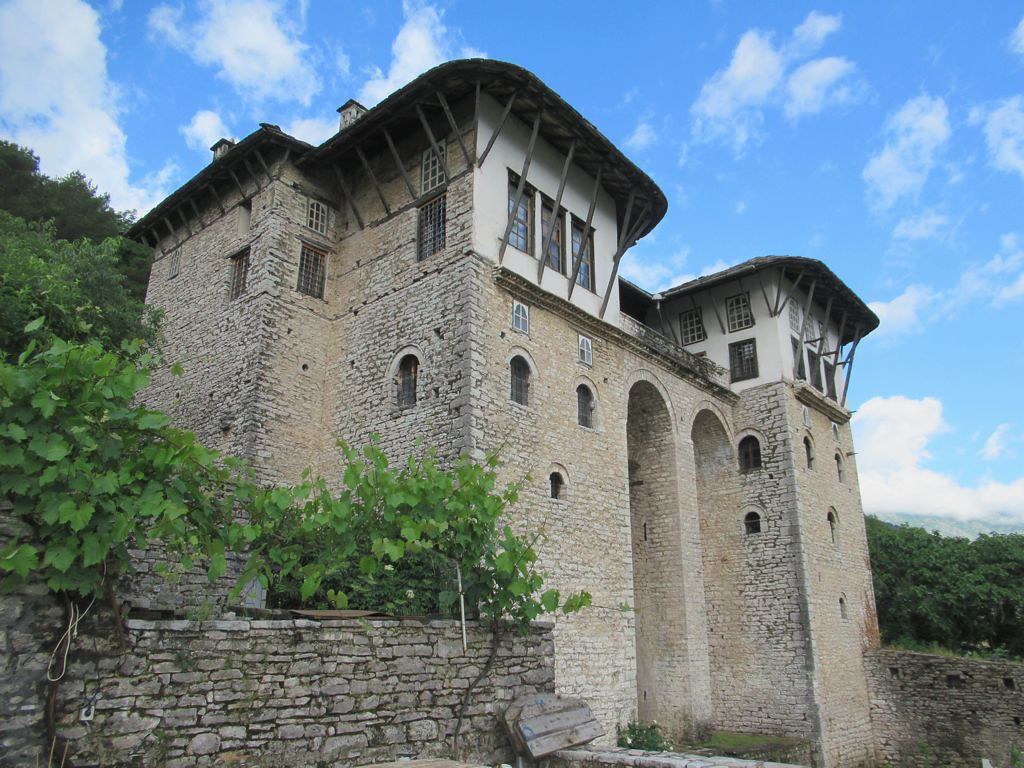
They’re also virtually always located on a high vantage point (with the exception of Porto Palermo Castle; more on that later), which provides beautiful views and plenty of photography possibilities.
Before you go on the road and drive to Dhermi, you should visit one of the city’s historic living buildings. These stunning 19th century structures, owned by some of Albania’s most distinguished families, are one-of-a-kind in that no two houses are same.
Climb all the way to the peak of Palorto to see the majestic double-winged Zekate House. Bekir Zeko, one of Ali Pasha’s administrators, erected Zekate in 1810, and it was renovated in 2005. It can be seen from practically anywhere in the city and is as stunning on the interior.
As you travel through Himarë (if you rented a car), you’ll realize that choosing Dhermi as your base was the proper option. Your home for the following two nights in Dhermi can be a tiny oasis of peace and tranquillity just outside the village and within easy walking distance of the beach, depending on your choice of accommodation. Alternatively, you might stay in the city center. Whatever path you choose, you will be rewarded with breathtaking vistas here and there.
Budget: Penelope’s Rooms
Mid-range: Barat Hotel
High end: Royal Oak Hotel (Renaissance Hotel)
Days 3+
The Albanian Riviera
Gjipe Beach is among Albania’s quietest and most unspoiled (and probably most beautiful) beaches due to its lack of road access. This is where you’ll be going once you get some breakfast from the neighborhood bakery. Gjipe has been found enough for someone to charge car parking charges (200LEK) at the top of the walkway, but even then it is exactly as described.
When you arrive in the morning, there may be two or three more people, and when you leave in the afternoon, there may be only a few more (mostly Albanian families). You can locate trails that take you uphill and provide breathtaking views of the beach below. It may be a little busy, so you may always avoid it.
Once you’ve returned to your car, drive down the coast in the other direction towards Palermo, stopping at the ruins of Himara Castle along the way. The castle is located about three kilometers uphill from New Himarë in the – now completely neglected and abandoned – Old Town.
Although it’s a shame to have such a quaint, historic portion of town left to crumble, the collapsing walls and peeling painting have a certain beauty, and you will like how the vegetation is striving to recover what remains of the hilltop defenses.
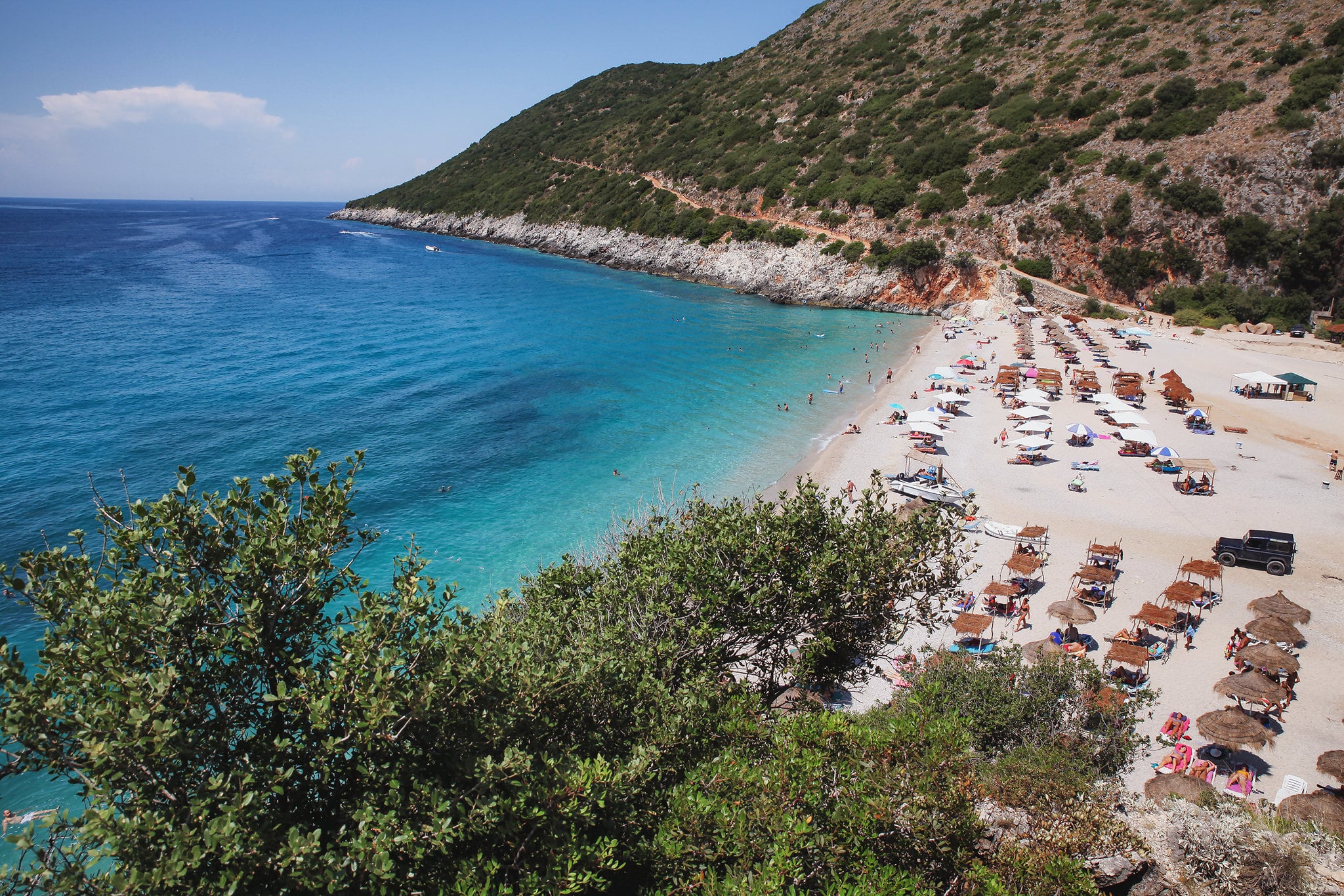
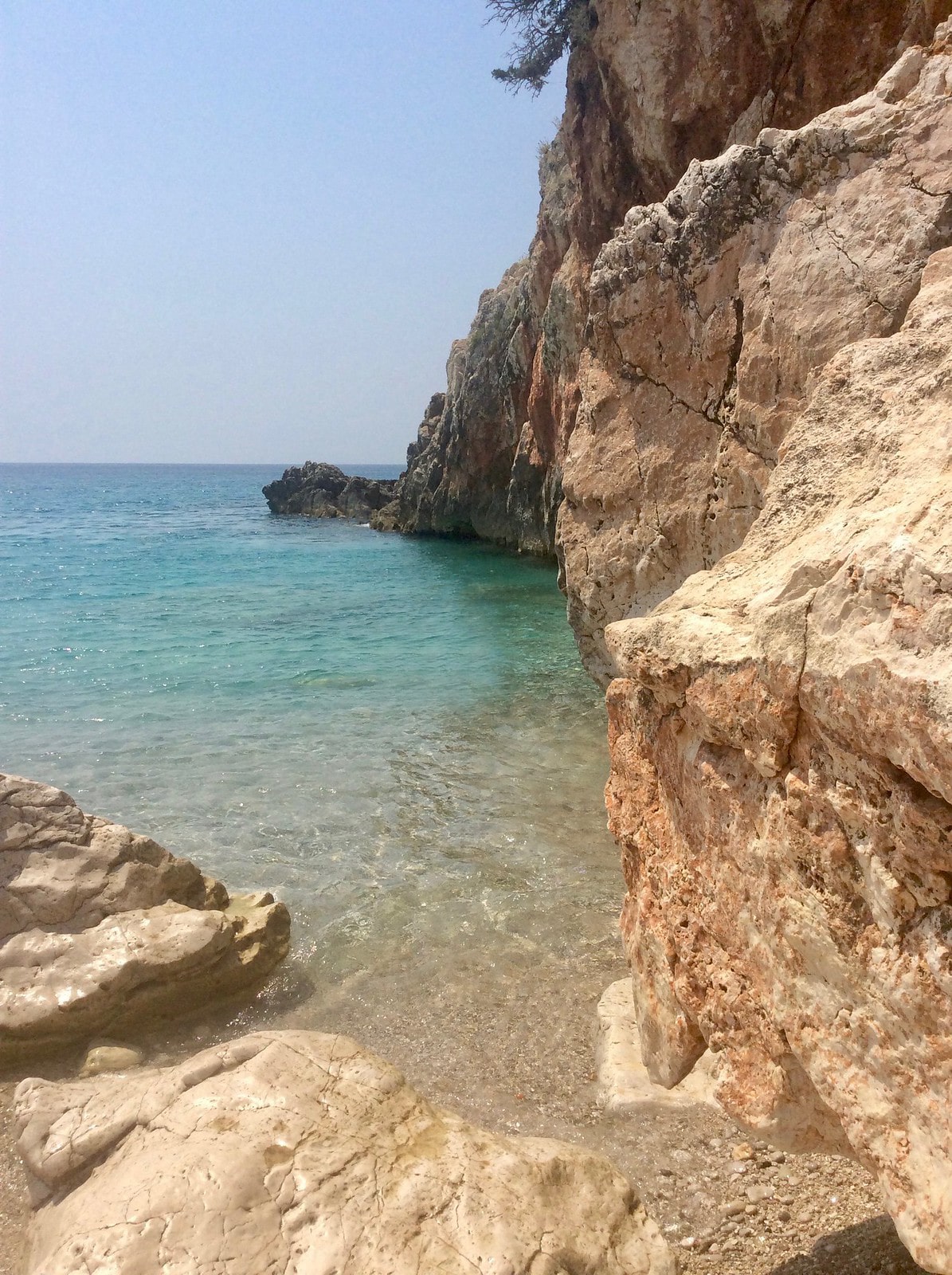

Next on the itinerary is Porto Palermo, where a Venetian-style stronghold (known as the ‘Castle of Ali Pasha’) exists on an island connected to the beach by a thin – and easily defendable – causeway in a scenic bay just south of Himar.
When traveling along that length of coastline, you can’t miss it, especially with its unique triangle design and bastions placed on each corner.
Porto Palmermo’s castle, a former Soviet submarine station under Albania’s communist dictatorship, is remarkably well kept both inside and out.
The inside is comprised of a massive vaulted hall with archways branching off to passageways that lead to smaller chambers. It’s a dark and perplexing spot where a torch might come in useful! You may find Aleks who will present himself as a local tour guide and part of a traditional Himarn folk ensemble to you.
Porto Palermo bay is also fantastic for snorkeling, and there’s a nice cafe just over the road with decent wifi (a rarity in Albania!) and views out to sea.
Be mindful of your schedule since you may not have time to travel to Borsh and see its castle because you will need to return to Dhermi before dusk to visit St. Mary’s Church. St. Mary’s is located around 500 meters above the hamlet of Dhermi. It’s feasible to drive almost all the way up there on a tiny winding road, then use stone stairs for the final 100 meters.
Even though the church itself is neglected, you will appreciate being the only one walking its grounds, and the vistas alone make the trek up here worthwhile.



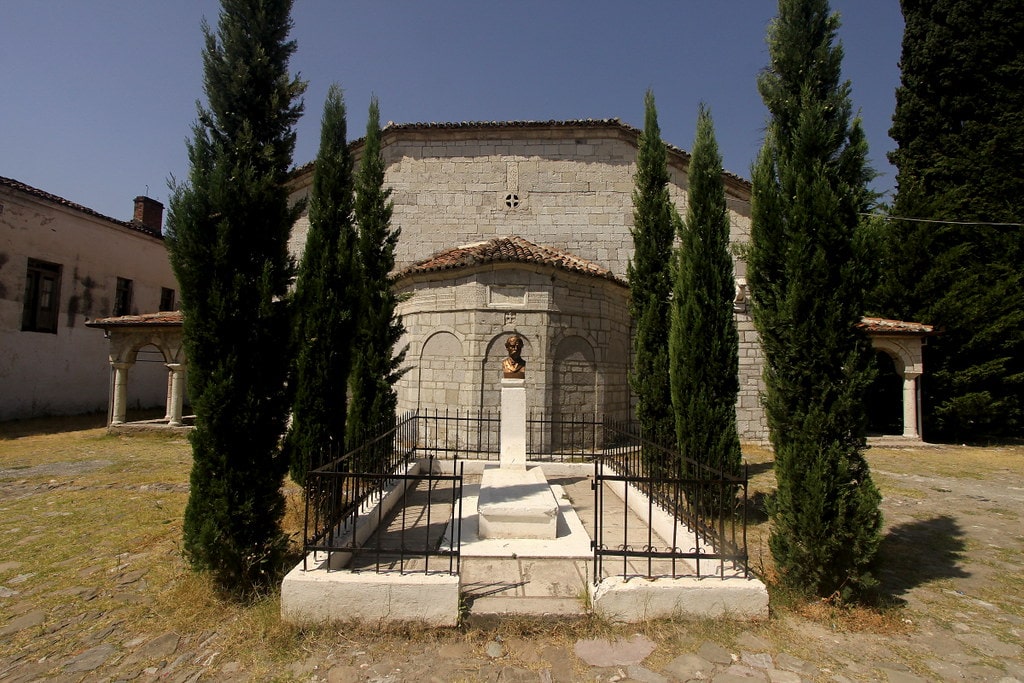



Days 4+
Travel to Berat via Apollonia
On your way to Berat, stop by the old Illyrian city of Apollonia. It’s a lengthy journey down, and be cautious if you’re driving because the road is in poor condition.
Apollonia, founded by the Greeks in 588 B.C., was once a prominent commercial port and cultural center for over 50,000 people. However, in the third century A.D., an earthquake caused the city to deteriorate. It was rediscovered in the early nineteenth century and was originally excavated between 1924 and 1938 by the French archeologist Léon Rey. However, 80 years later, it is estimated that a major portion of the site (about 90 percent) is still hidden. What has been discovered, however, is rather remarkable, particularly Apollo’s Temple and the Odeon Theatre.
There’s also a 13th-century church and monastery on the property, as well as a museum housing many of the ancient riches discovered during excavations in the region. If you need to take a break from your travels, the Léon Rey café is located at the top of Tenemos Hill and offers excellent views of the surrounding area.
Working hours: May 15–October 15, 09:00–18:00. 09:00-16:00 hours, 16 October-April
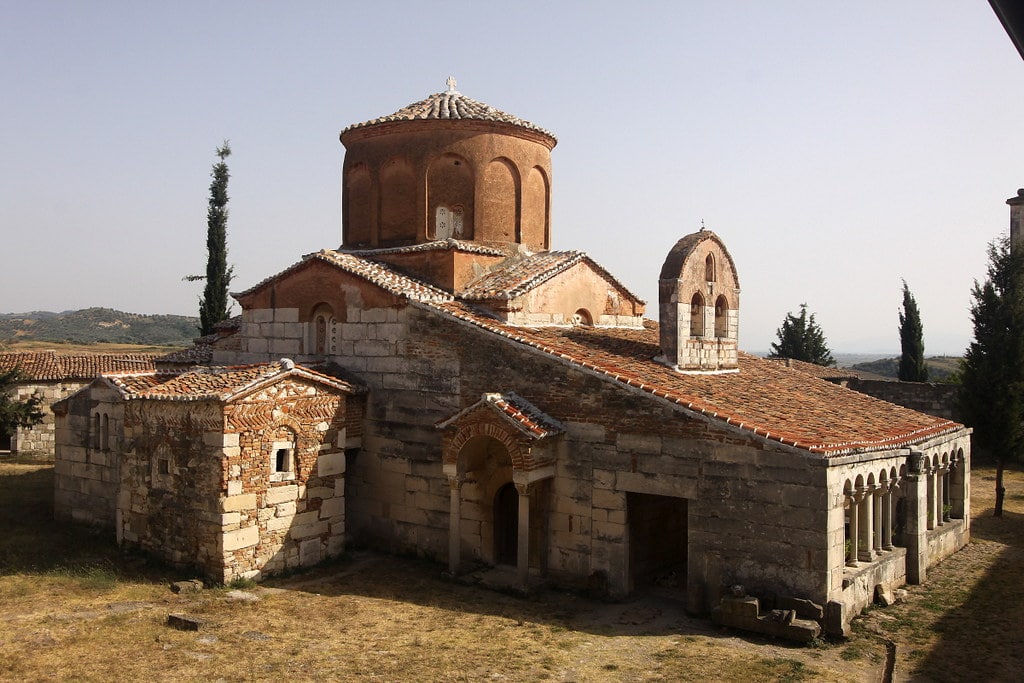

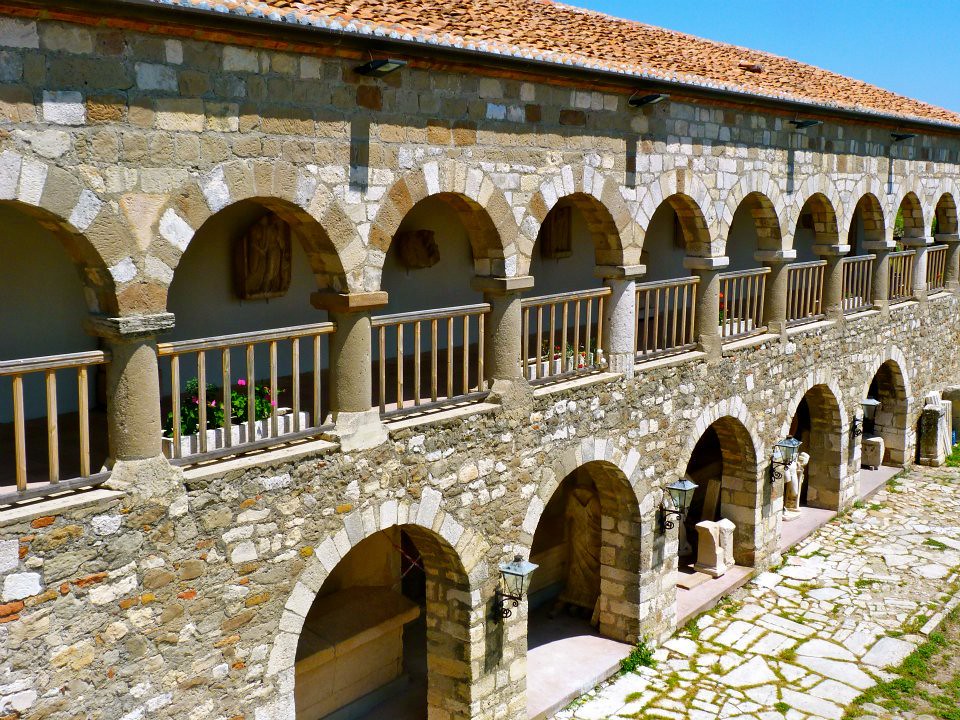
You may easily spend two or three hours at Apollonia before proceeding to Berat. Just keep your timetable in mind.
Consider staying two nights in Berat since it’s a place you’ll fall in love with. Berat is likely to be a favorite place for you when you visit Albania, and you will want to return in a heartbeat.
Berat is one of Albania’s oldest cities, having been inhabited since the Bronze Age about 4000 years ago. It was included to the UNESCO World Heritage List in 2008, together with Gjirokastr, as a unique example of a well-preserved Ottoman town. Traditional Ottoman dwellings appear to be heaped on top of one another like stairs ascending the mountainside on both sides of the Osum river. It’s a one-of-a-kind and breathtaking picturesque scene.
Narrow cobblestone alleys and stone steps form a genuine maze between these residences, encouraging investigation.
Consider having dinner where food is made from scratch. Lili is at the heart of Manglem’s labyrinth. It’s a simple, rustic restaurant where you’ll be welcomed like an old friend to a family dinner. Because of its small size, it quickly fills up, so expect to be turned away (though Lili will try his best to accommodate you). It opens at 6:30 p.m. every day for supper and closes at 9:30 p.m. They also serve lunch from 12:45 p.m. and close at 3 p.m.
This section will be updated shortly
This section will be updated shortly
This section will be updated shortly
Days 5+
Explore Berat, travel to Përmet via Benjë
To make the most of your limited time in Berat, you trek up to its castle before breakfast to escape the heat as much as possible. But it occured to us on the way up that it may not be open at 7 a.m.! The gates are open, but there will most likely be no one at the kiosk to collect your admission money. A small tip: the 100 LEK admittance charge is only valid between 9 a.m. and 6 p.m., so you’ll have the entire area to yourself.
Berat Castle is an unusual place in that its crumbling castle walls surrounds a little hilltop settlement that is still inhabited by people.
Within the castle complex, there were formerly 20 Christian churches (to suit the fortress’s mostly Christian occupants) and a mosque (for use of the Turkish garrison). Only eight churches survive now (one of which houses the Onufri National Museum), and the red mosque is only recognized by its minaret; the remainder has been reduced to damaged foundations. There’s also an old underground water cistern on the property, as well as a few cafés, restaurants, and guest rooms. But be warned: if you remain here, you’ll have a very hard trek back home at the end of the night! Fun fact: Berat Castle appears on the back of the Albanian 10 LEK coin produced in 1996, 2000, and 2013.



On the way to Përmet and passing by Benjë, if you are driving, you could find that the time you’re intended to arrive is passing you by. If you want to venture off the beaten path in Albania, we’d recommend renting a 4 x 4 vehicle rather than a compact car with a very short wheelbase. Don’t put your confidence in a road that appears to be in good shape at first, or one labeled as a State Highway (SH) on a map, because they can (and do) change into dirt tracks inaccessible to the majority of cars.
On the plus side though, you will pass through some beautiful, lush mountain scenery and deep canyons.
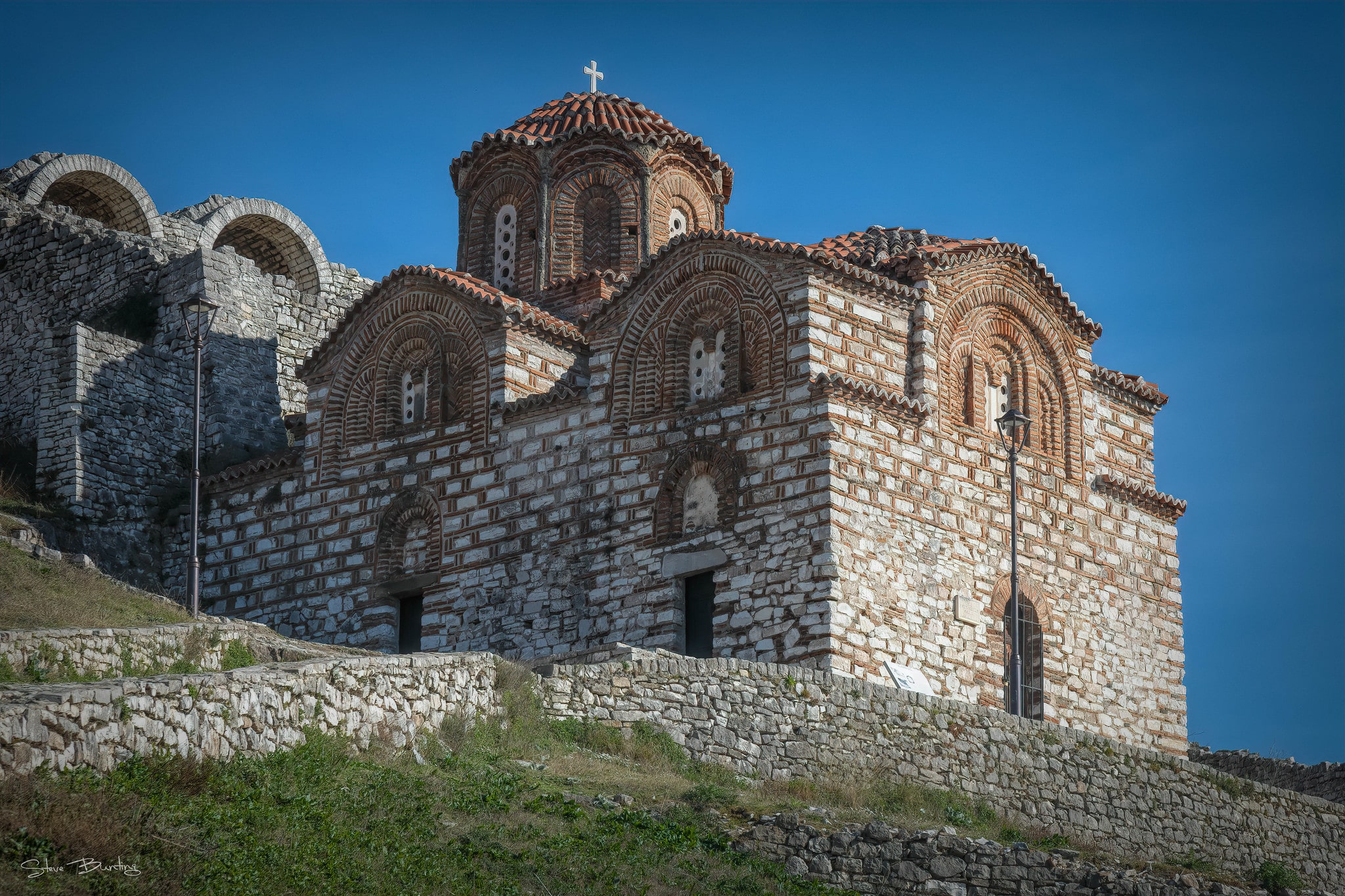

- Camping: There is free public camping space accessible, as well as public facilities located around the hamlet. However, locals warn against camping here because a few individuals were abducted here some years ago.
- Budget: The Dir Hotel/chaikhana near Band-e-Haibat, which is the most popular lake, charge 100 Afs for a mat on the floor.
- Mid-range: National Park Guest House - The property is marked with a sign on the left side of the main road through the Band-e-mir hamlet.


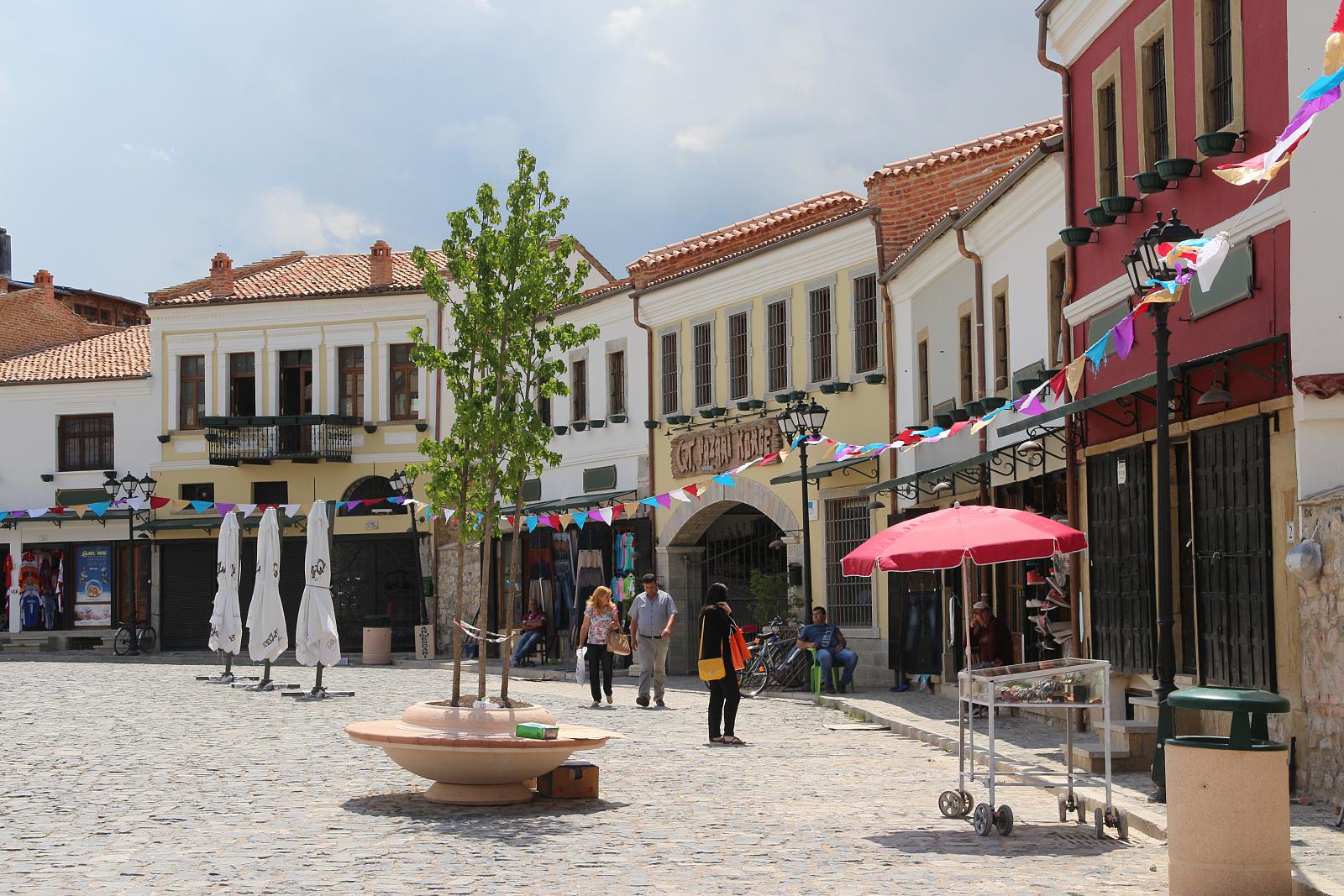

Days 6+
Travel to Korça via Voskopojë
Drive (or take public transportation) along quiet winding roads surrounded by lush tree-covered hills and craggy snow-capped mountain peaks, passing through tiny farming villages and vast forests, and the sound of flowing water – whether from a nearby waterfall or stream, or from the Vjosa river or one of its tributaries – is never far away. Visit Erseke, Albania’s designated highest town at 1050 meters above sea level.
You may choose to stay in the Old Market Rooms, a charming modest apartment situated in the heart of Korça’s bazaar.
Korça’s bazaar is an Ottoman-era bazaar that was constructed some 500 years ago, rebuilt in 1879 after a major fire, and then restored in 2015 to serve as a tourism focus for visitors to the city. It used to host over 1000 establishments and functioned as a city inside a city. Although it currently exists on a much smaller scale, with the bulk of units being cafes and bars rather than stores, it’s a beautiful area to hang out when the sun is shining.
In the late afternoon, you can see even more of the town by walking out to Vila Cofiel for dinner, passing by the Cathedral of the Resurrection, Albania’s largest Orthodox church. Vila Cofiel is an excellent choice because of its attractive and traditional setting, delicious meals, and live music on Friday and Saturday nights.
Although Korça does not have many tourist attractions, it is worth seeing one of Albania’s oldest mosques (Mirahori Mosque, erected in 1494), as well as the National Museum of Medieval Art.
This section will be updated shortly.
This section will be updated shortly.
This section will be updated shortly.





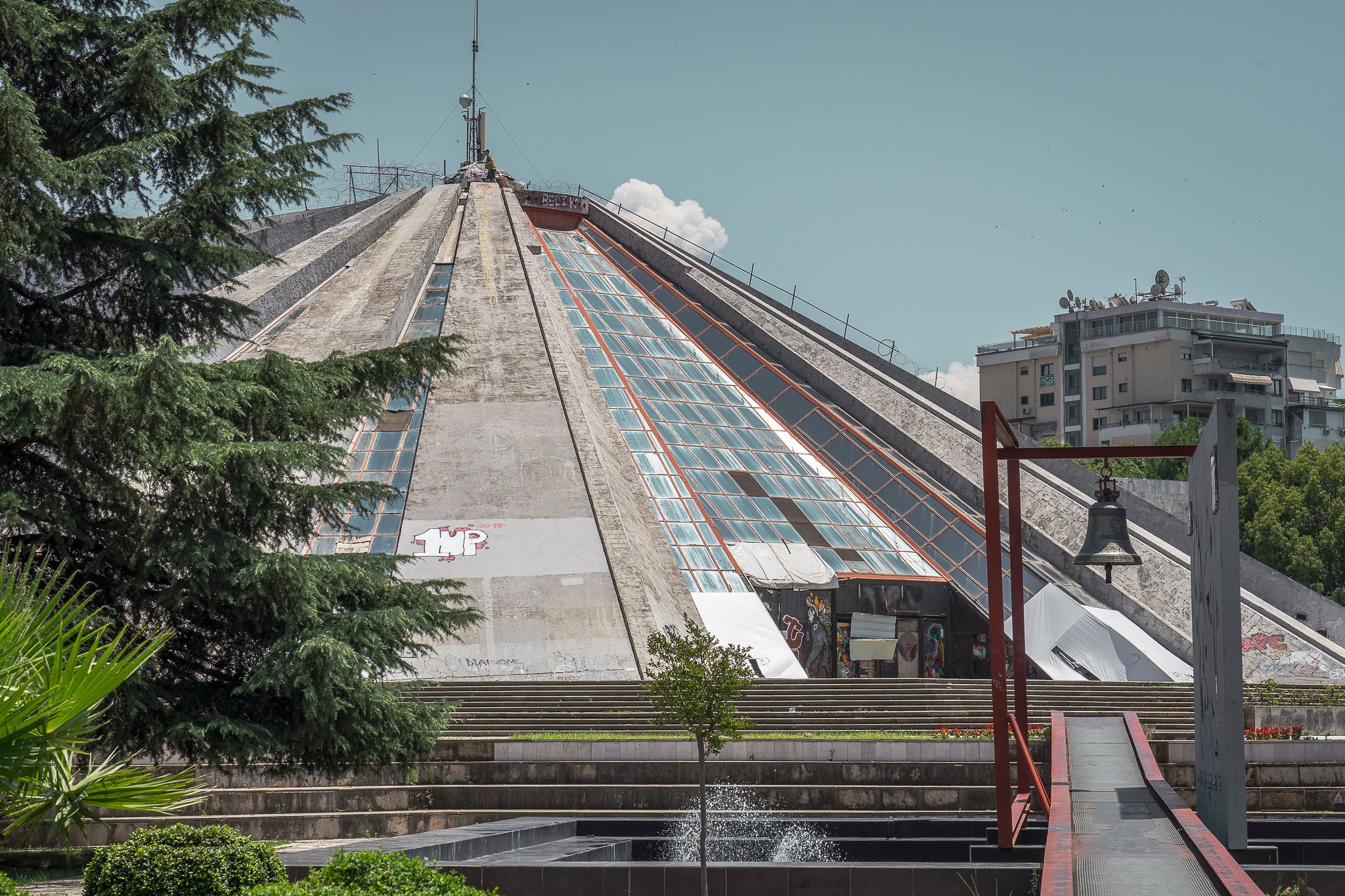
Days 7+
Travel to Tirana
You’ll hit the road again after a delicious breakfast at one of the cafés on the main plaza in the heart of Korça’s market. Today’s trip would take you along the Albanian side of Lake Ohrid and via the city of Elbasan. Your last stop would be Tirana, where we would drop off your car and bring your seven-day road tour throughout Albania to a close.
Once you reach Elbasan, you will have the option of boarding the new A3 highway, which will take you almost all the way to Tirana. Some navigation programs, however, are unaware of this and may direct you up the old route — the SH3. But don’t worry, you’ll be grateful it happened. The ancient route is located high above the modern A3 and provides a considerably calmer and more enjoyable driving experience, as well as some spectacular vistas.
You will drop the vehicle off at Tirana airport, then wait for a bus (which might take up to an hour) to transport you into Tirana’s center, where you will arrange an overnight hotel before returning to the airport and continuing your vacation elsewhere.
Skanderbeg Square is a must-see. Tirana’s principal square, which houses the Et’hem Bey Mosque as well as the National Historical Museum. Then there’s the Independence Monument. The monument, which weighs a phenomenal 15 tonnes and was created in Austria by artists Visar Obrija and Kai Kiklas, was inaugurated in 2012 and is a symbol of the Albanian nation’s power and resistance in times of adversity and conflict.
Go to Bunk Art 1 and 2,- Inside an abandoned bunker (or, in this instance, two abandoned bunkers!) You should also Pyramid of Tirana, learn about Albania’s history. The structure has been abandoned (it was originally built to house a museum dedicated to Enver Hohxa before Communism fell), but the unusual structure still stands.
Visit Skyscraper. A revolving restaurant at the top of the skyscraper provides 360-degree views of Tirana. Street art with an electric box. On electricity boxes, famous celebrities and cartoon characters have been painted. Colorful and entertaining!
Head to Mount Dajti which can be reached via cable car. The trip takes around 15 minutes and provides breathtaking views of the city. There are also some fantastic walks up there.
This section will be added shortly.
This section will be added shortly.
This section will be added shortly.
Days 8+
Head to the Airport
You’ve had a great Albanian experience so far, make sure you have packed all your belongings, especially your important stuff, like your passport (Of course). Then head back home knowing you had the best time in a cultural mix.

The Most Popular Food in Albania
Traditionally, the Albanian culture’s openness has always resulted in a blend of food and hospitality. Being warm and friendly, whether to friends or strangers, is a key component of Albanian society. Albania’s predominantly meat-based cuisine combines features of Slavic, Turkish, and Italian cuisines. Modern cuisine have their origins in the Ottoman Empire, and Turkish influences may be found. Italian and Greek cuisines are two other recent culinary influences. Albanian cuisine emphasizes nutritious components such as vegetables, fruits, fish, dairy products, and meat. Olive oil is the most often used cooking fat in traditional Albanian recipes. Herbs are also commonly employed, bringing a distinct and delectable flavor to the cuisine. Garlic is a must-have, as are onions, which may be the most important ingredient in the entire country.

Tavë Kosi
Lamb cooked in yogurt is a popular traditional meal in Albania, often eaten for lunch. Elbasan tava, named for the Albanian city from whence it originated, is widely recognized across the Balkans. Tave kosi is traditionally cooked with lamb, although it may also be found with chicken. The yogurt is combined with rice and eggs and cooked alongside the meat.

Fërgesë
Fërgesë is with no uncertainty one of Albania’s most traditional meals. The key ingredients are tomato sauce, cottage cheese, green peppers, and garlic. The meal is also known as summer stew since many Albanians like to eat it after it has cooled for 2-3 hours. This thickens the sauce and helps the components stand out more. Frges is typically served with bread.
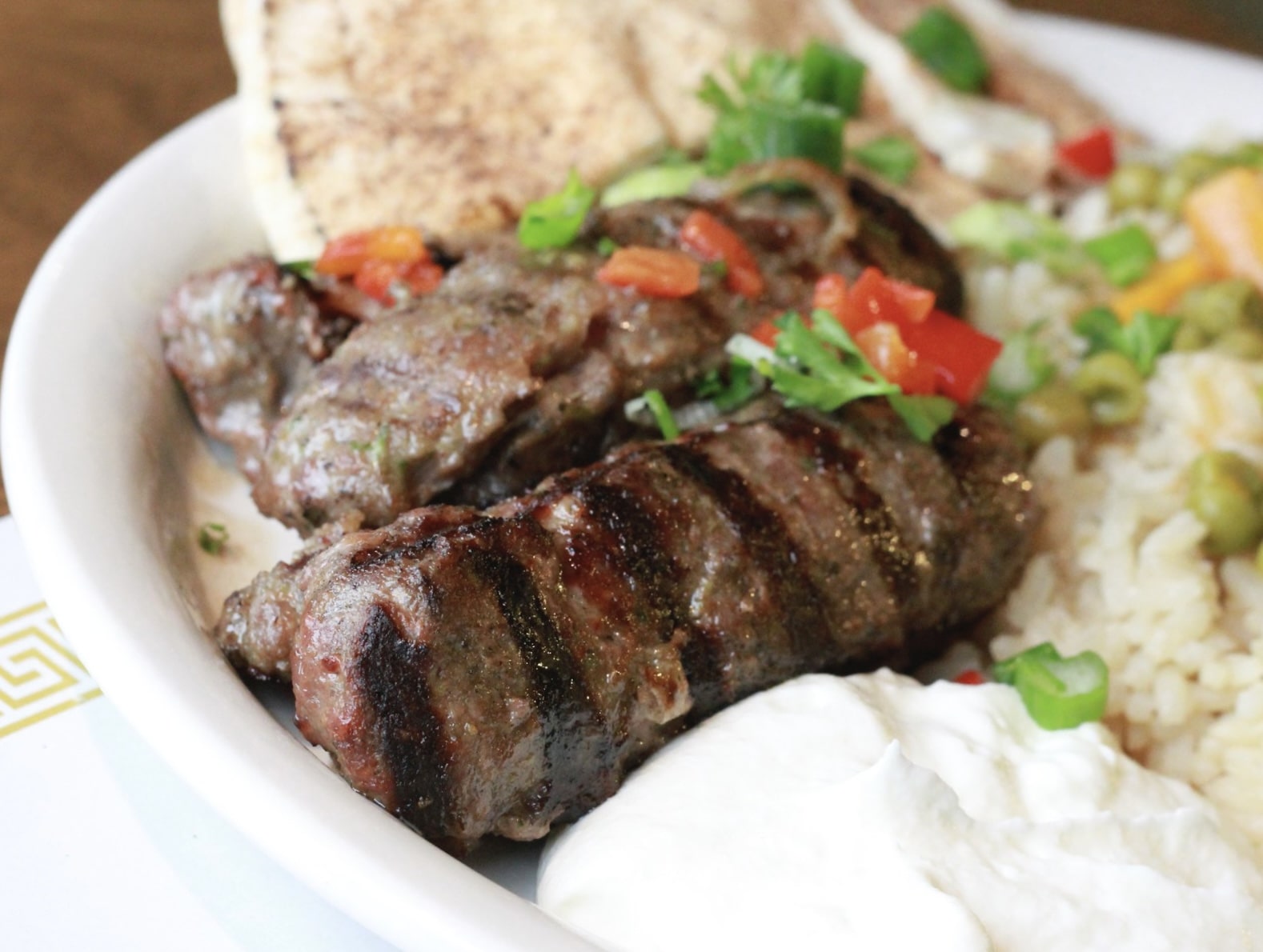
Qofte
Qofte are meatballs that may be grilled, baked, or fried. Herbs, spices, and vegetables may also be included. Qofte is a typical Albanian dish that may be found across southeastern Europe, the Middle East, and even India. It can be eaten as a snack, with a salad, dipped in yogurt, with toast, or as a meal side. Traditional qofte is cooked with diced lamb and herbs.
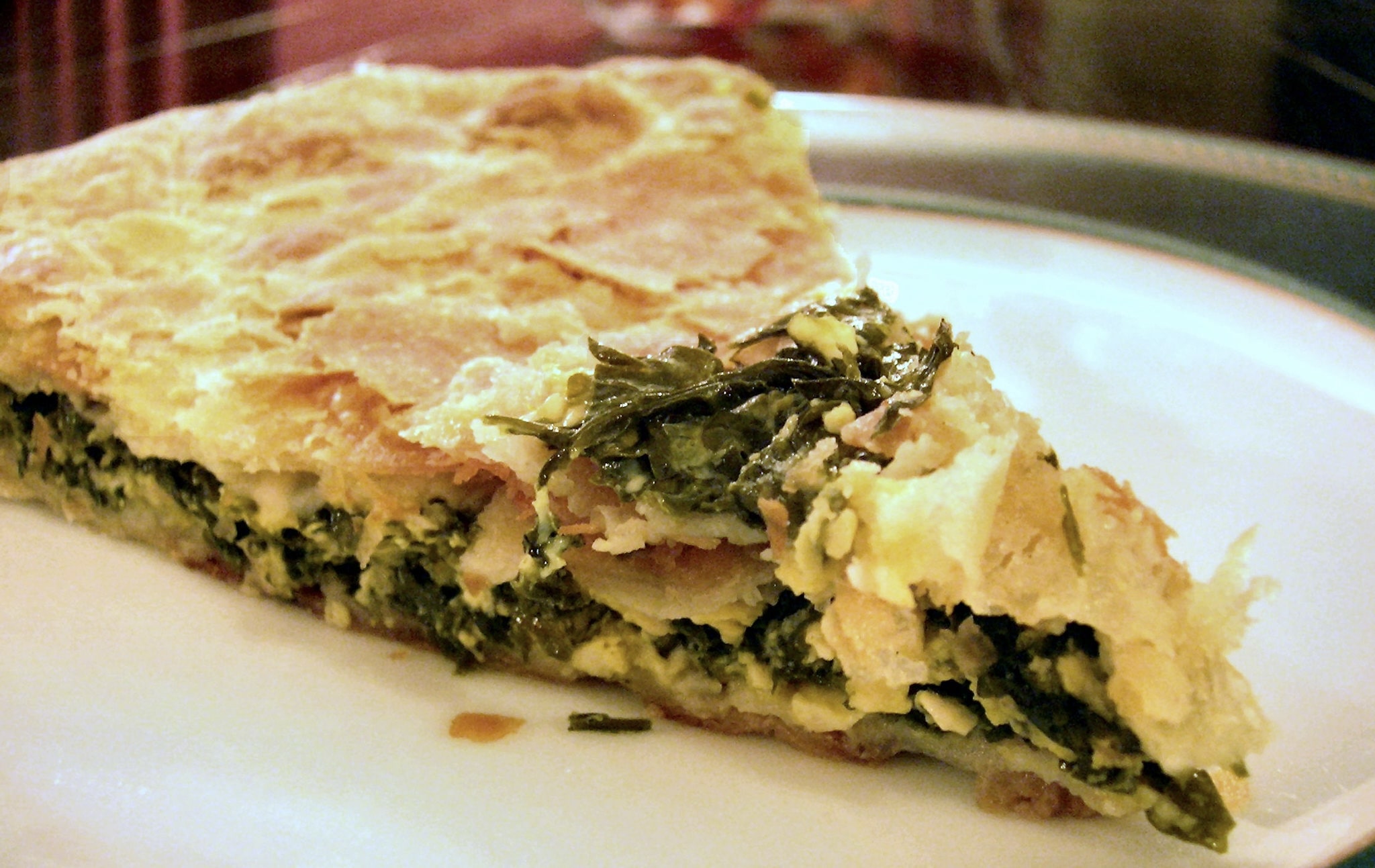
Byrek
Byrek, a delightful salty pie made with filo dough, is the most renowned cuisine in Albania as well as the rest of the Balkans. It is available in a variety of sizes and shapes around the country. One of the most popular is byrek with spinach, although byrek is also sold in pubs, trucks, and pastry shops, frequently with gjize cheese or meat. All of them are wonderful!

Baklava
Baklava is the jewel of Turkey, the Middle East, and the Balkan Peninsula: you may get it in a variety of sizes and shapes while visiting Albania. The traditional Albanian form of this famous cake is created with nuts, but the pistachio variant, which is much better, is available in bakeries and pastries.
What's the Travel Budget in Albania?
Flights
- Flights start at roughly $200 from nearby countries. Tickets however on average cost around $900 and can cost more depending on which class and from which country you depart from.
Accommodation
- Nomad Backpacking style travelers can expect to spend around $100 for a week
- Budget travelers can expect to spend around $150 for a week
- Mid-range travelers can expect to spend around $350 for a week
- Luxury travelers can expect to spend around $720 for a week
Food Budget (Three meals and drinks)
- Nomad Backpacking style travelers can expect to spend around $17 per person per day
- Budget travelers can expect to pay around $24 per person per day
- Mid-range travelers on average would cost $30 to $40 per person per day
- Luxury travelers can expect to pay around $50 to $140 per person per day
Overall Budget Styles (Not including Flights, Tours, Transportation, or Car Rental)
- Nomad Backpacking style travelers can expect to spend around $250 for a week
- Budget travelers can expect to spend around $350 for one person for a week
- Mid-range travelers can expect to spend around $700 for one person for a week
- Luxury travelers can expect to spend around $1400 for one person for a week
Flights
- Flights start at roughly $200 from nearby countries. Tickets however on average cost around $900 and can cost more depending on which class and from which country you depart from.
Accommodation
- Nomad Backpacking style travelers can expect to spend around $100 for a week
- Budget travelers can expect to spend around $150 for a week
- Mid-range travelers can expect to spend around $350 for a week
- Luxury travelers can expect to spend around $720 for a week
Food Budget (Three meals and drinks)
- Nomad Backpacking style travelers can expect to spend around $17 per person per day
- Budget travelers can expect to pay around $24 per person per day
- Mid-range travelers on average would cost $30 to $40 per person per day
- Luxury travelers can expect to pay around $50 to $140 per person per day
Overall Budget Styles (Not including Flights, Tours, Transportation, or Car Rental)
- Nomad Backpacking style travelers can expect to spend around $250 for a week
- Budget travelers can expect to spend around $350 for one person for a week
- Mid-range travelers can expect to spend around $700 for one person for a week
- Luxury travelers can expect to spend around $1400 for one person for a week
Flights
- Flights start at roughly $200 from nearby countries. Tickets however on average cost around $900 and can cost more depending on which class and from which country you depart from.
Accommodation
- Nomad Backpacking style travelers can expect to spend around $100 for a week
- Budget travelers can expect to spend around $150 for a week
- Mid-range travelers can expect to spend around $350 for a week
- Luxury travelers can expect to spend around $720 for a week
Food Budget (Three meals and drinks)
- Nomad Backpacking style travelers can expect to spend around $17 per person per day
- Budget travelers can expect to pay around $24 per person per day
- Mid-range travelers on average would cost $30 to $40 per person per day
- Luxury travelers can expect to pay around $50 to $140 per person per day
Overall Budget Styles (Not including Flights, Tours, Transportation, or Car Rental)
- Nomad Backpacking style travelers can expect to spend around $250 for a week
- Budget travelers can expect to spend around $350 for one person for a week
- Mid-range travelers can expect to spend around $700 for one person for a week
- Luxury travelers can expect to spend around $1400 for one person for a week
Flights
- Flights start at roughly $200 from nearby countries. Tickets however on average cost around $900 and can cost more depending on which class and from which country you depart from.
Accommodation
- Nomad Backpacking style travelers can expect to spend around $100 for a week
- Budget travelers can expect to spend around $150 for a week
- Mid-range travelers can expect to spend around $350 for a week
- Luxury travelers can expect to spend around $720 for a week
Food Budget (Three meals and drinks)
- Nomad Backpacking style travelers can expect to spend around $17 per person per day
- Budget travelers can expect to pay around $24 per person per day
- Mid-range travelers on average would cost $30 to $40 per person per day
- Luxury travelers can expect to pay around $50 to $140 per person per day
Overall Budget Styles (Not including Flights, Tours, Transportation, or Car Rental)
- Nomad Backpacking style travelers can expect to spend around $250 for a week
- Budget travelers can expect to spend around $350 for one person for a week
- Mid-range travelers can expect to spend around $700 for one person for a week
- Luxury travelers can expect to spend around $1400 for one person for a week
If you want to know what to pack, read this list below:
- This is a conservative country that can get extremely cold, dress accordingly
- Raincoat or Light Waterproof Jacket
- Hiking Boots or Sturdy Sneakers (Shoes You Don’t Mind Getting Wet)
- Sunscreen
- Insect Protection – Repellent and Clothing
- Sunglasses and Sun Hat
- Water Shoes
- Beach Towels/Sarong
- Dry Bag
- Money Belt or Cross Bag
- Portable Medical Kit
- Flashlight or Headlamp
- Copies of your passport.
- Get all the needed vaccinations before traveling
- A power bank is a must in any travel.
- Always have some cash with you just in case there are no ATMs and if you are dealing with a business that solely accepts cash
- Get yourself an adapter for your gadgets
- 1 toothbrush
- 1 tube of toothpaste
- 1 razor
- 1 package of dental floss
- 1 small bottle of shampoo
- 1 small bottle of shower gel
- 1 towel
- Deodorant
- Band-Aids
- Hydrocortisone cream
- Antibacterial cream
- Earplugs
- Tylenol
- Hand sanitizer (germs = sick = bad holiday)
- A key or combination lock
- Zip-lock bags
- Plastic bags (great for laundry)
- Universal charger/adaptor
- LifeStraw (A water bottle with a purifier)
- 1 dry shampoo spray & talc powder
- 1 hairbrush
- Makeup you use
- Hairbands & hair clips
- Feminine hygiene products
Clothing For Boys
- 1 pair of jeans or khaki pants
- 1 pair of shorts
- 1 bathing suit
- 5 T-shirts
- 1 long-sleeved T-shirt
- 1 pair of flip-flops
- 1 pair of sneakers
- 6 pairs of socks
- 5 pairs of boxer shorts
Clothing For Girls
- 1 swimsuit
- 1 sarong
- 1 pair of stretchy jeans
- 1 pair of leggings
- 2-3 long-sleeve tops
- 2-3 T-shirts
- 3-4 spaghetti tops
- 1 light cardigan
Want to plan your own trip, here are some of the best resources that can help you
- Skyscanner – They search small websites and budget airlines that larger search sites tend to miss. They are hands down the number one place to start.
- Momondo – This is another favorite flight search engine because they search such a wide variety of sites and airlines. Always check here too.
- Booking.com – The best all-around booking site that constantly provides the most affordable and lowest rates. They have the widest selection of budget accommodation.
- Couchsurfing – This website allows you to stay on people’s couches or spare rooms for free. It’s a great way to save money while meeting locals who can tell you the ins and outs of their city. The site also lists events you can attend to meet people (even if you’re not staying with someone).
- Intrepid Travel – If you want to do group tours, go with Intrepid. They offer good small group tours that use local operators and leave a small environmental footprint.
- Grassroots Volunteering – For volunteering, Grassroots Volunteering compiles a list of good local volunteer organizations that keep the money within the community.
- Get Your Guide – Get Your Guide is a huge online marketplace for tours and excursions. They have tons of tour options available in cities all around the world, including everything from cooking classes, walking tours, street art lessons, and more! It has the world’s largest collection of things to do with more than 30,000 activities in 7500 destinations.
- SafetyWing – Safety Wing offers convenient and affordable plans tailored to digital nomads and long-term travelers. They have cheap monthly plans, great customer service, and an easy-to-use claims process that makes it perfect for those on the road.
- Trip Advisor: Check the reviews and then book your accommodation. TripAdvisor is where you go when you want to compare prices with multiple accommodation providers.
- VRBO: is the main search engine to use when you are looking for a home or apartment rental. It can sometimes be cheaper than hotels and it is the best way to stay in areas that offer a more local feel.
- Hostelworld: With one of the largest databases of hostels in the world, Hostelworld is the go-to site when you are looking for budget accommodation.
- Rome 2 Rio: If you want to see how to get somewhere by plane, train, bus, ferry, or car Rome2Rio lays it all out for you as well as related costs.
- World Nomads Insurance: When traveling you should always have travel insurance. We have found the best bang for your buck is by far World Nomads.
Final Thoughts on Albania
Albania’s diversity is real, and as you got to know it by now, would you visit?
Have you been to Albania?
Let us know in the comments below